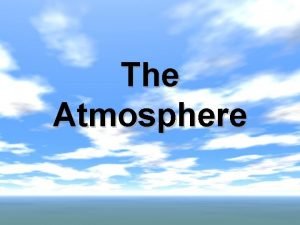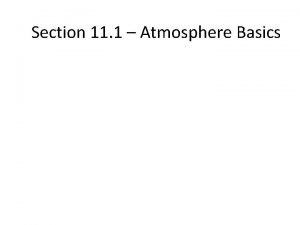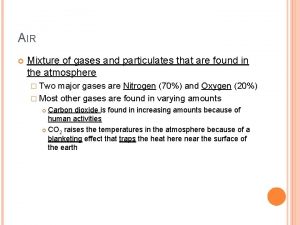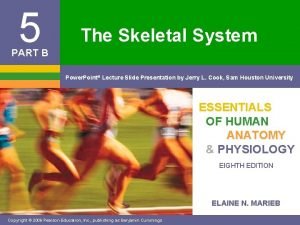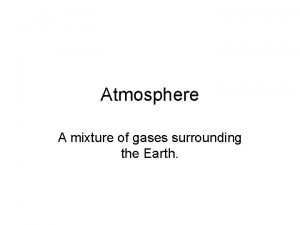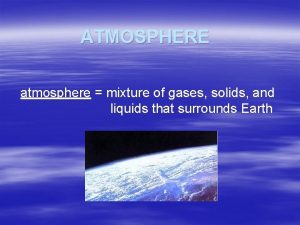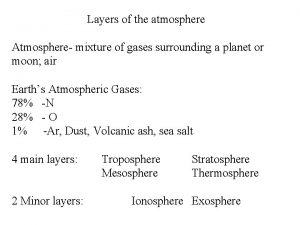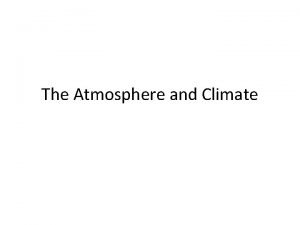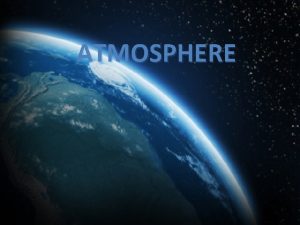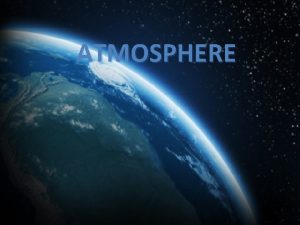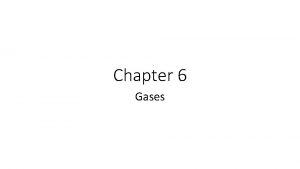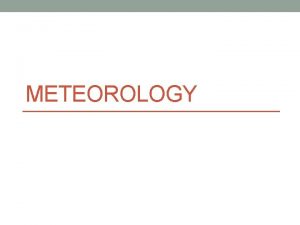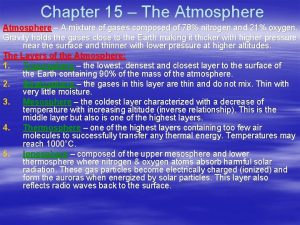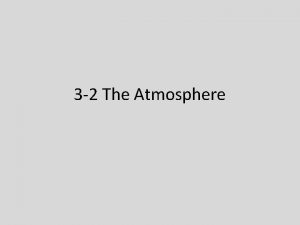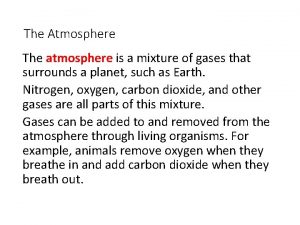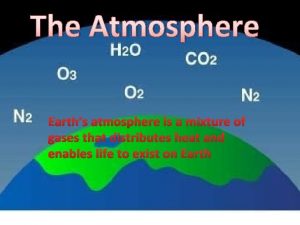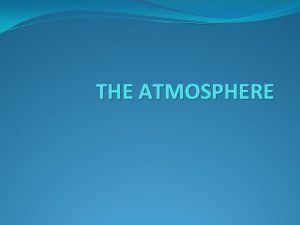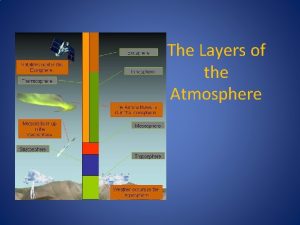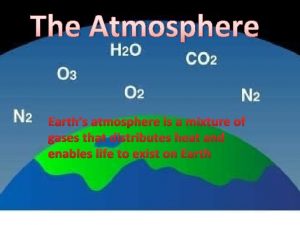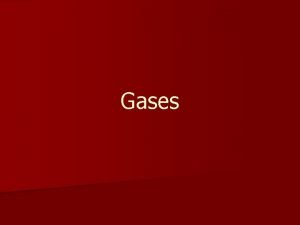OUR ATMOSPHERE ATMOSPERE A mixture of gases surrounding

























- Slides: 25

OUR ATMOSPHERE

ATMOSPERE A mixture of gases surrounding a planet or moon.

Atmospheric Gases § Nitrogen (N) 78% § Oxygen (O) 21% § Water Vapor (H 20) 0. 0 – 4. 0% § Trace gases & Debris 1%

Trace Gases § Neon – emits a glowing light § Helium – lighter than air § Methane – natural gas § Krypton – hidden gas § Xenon – strobe light § Hydrogen – organic § Ozone – protects / pollutes

SMOG A hazy condition in the atmosphere created when a variety of pollutants mix and then react with sunlight.

Describe 3 physical states of water: § Solid (Snow / Sleet) § Liquid (Rain) § Gas (Cloud, fog, smog)

Composition of the Atmosphere

How does the atmosphere stay around the Earth w/out going into space? §GRAVITY

Air Pressure § The measure of the force w/ which air molecules push on a surface. § Closer to Earth, air is more dense causing more pressure.


Name the Layers of the Atmosphere § Troposphere § Stratosphere § Mesosphere § Thermosphere § Exosphere

Troposphere § From the ground to 12 km § 75% of the atmospheric gases § 90% of the atmosphere’s total mass. (densest layer) § The part we live in.

Stratosphere § 31 miles above the Earth's surface § Ozone layer –Protects life on Earth by absorbing UV rays. § Gases are layered and do not mix.

Ozone § A gas that occurs naturally in the stratosphere, that protects the earth from the sun’s radiation. § When formed in the air above cities, it is a pollutant that can harm plants and damage our lungs.

Mesosphere § 53 miles above earth § Middle layer § Very cold § meteorites

Thermosphere § 430 miles above earth § Temperature can reach 3, 600°F (very hot) § Feels cold due to low air content. § Ionosphere – reflects radio waves.

Ionosphere A layer of electrically charged particles that allows radio waves to be reflected which allows for transmission and reception of radio signals.


Exosphere § 6200 miles above earth § Outer layer § Satellites orbit the earth. § Space


Temperature and Air Pressure § Higher Temperature = Lower pressure. Reason: heated air molecules move w/ greater energy causing the molecules to become less dense in an area. § Lower Temperature = Higher pressure. Reason: cool air molecules slow down and become more dense causing the volume of air to weigh more.

Why does the troposphere, in which we live, feel hotter than thermosphere when the o temp of thermosphere o reaches over 1, 000 ? § Air molecules are closer together, therefore, colliding and transferring thermal energy.


How do you measure air pressure in the atmosphere? § Barometer

How to read a barometer: § High air pressure – Low moisture – Cooler temperature – More air molecules § Low air pressure – Moist, saturated air – Warmer conditions – Less air molecules and more water molecules.
 It is a mixture of several gases
It is a mixture of several gases A thin layer of gases surrounding earth
A thin layer of gases surrounding earth Gases on earth's atmosphere
Gases on earth's atmosphere Air mixture of gases
Air mixture of gases Is windex homogeneous or heterogeneous
Is windex homogeneous or heterogeneous The phase of the moon you see depends on ______.
The phase of the moon you see depends on ______. Perceptual region definition
Perceptual region definition Italy border countries
Italy border countries Surrounding
Surrounding Suez canal importance
Suez canal importance Where is brazil
Where is brazil Body sutures
Body sutures Where was ancient greece located on a map
Where was ancient greece located on a map Double layered membrane
Double layered membrane Surrounding net
Surrounding net Chapter 5 the skeletal system figure 5-10
Chapter 5 the skeletal system figure 5-10 Issues surrounding information privacy
Issues surrounding information privacy What ethical issues surrounding executive compensation
What ethical issues surrounding executive compensation Surrounding
Surrounding Money madness was published in the collection
Money madness was published in the collection Thinking affects our language which then affects our
Thinking affects our language which then affects our We bow our hearts
We bow our hearts Awareness of ourselves and our environment is
Awareness of ourselves and our environment is Our future is in our hands quotes
Our future is in our hands quotes Our census our future
Our census our future Our census our future
Our census our future

